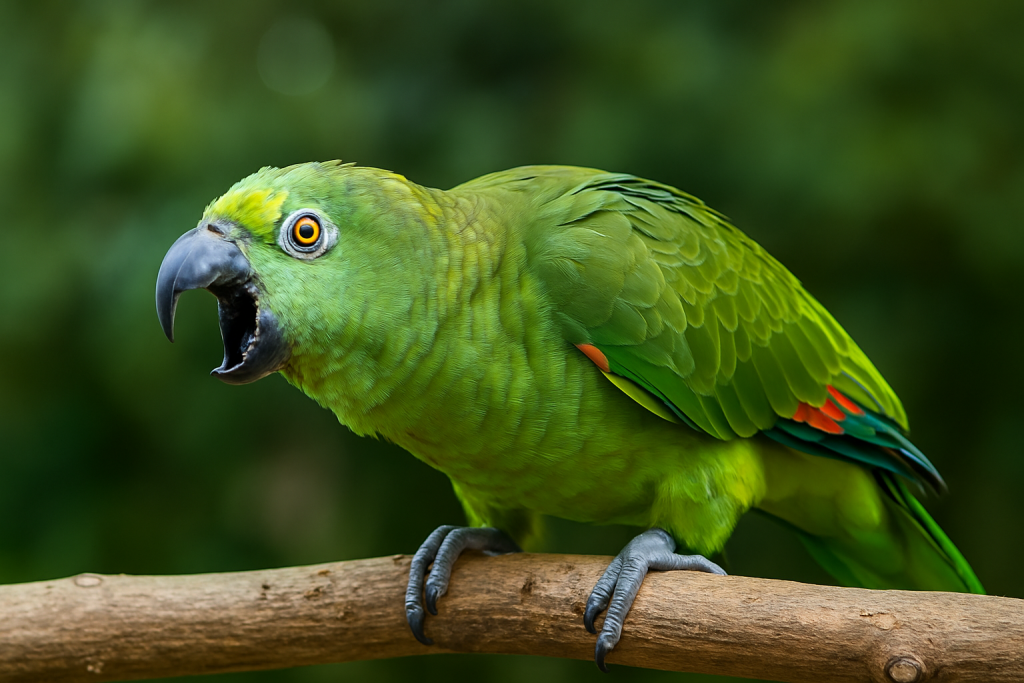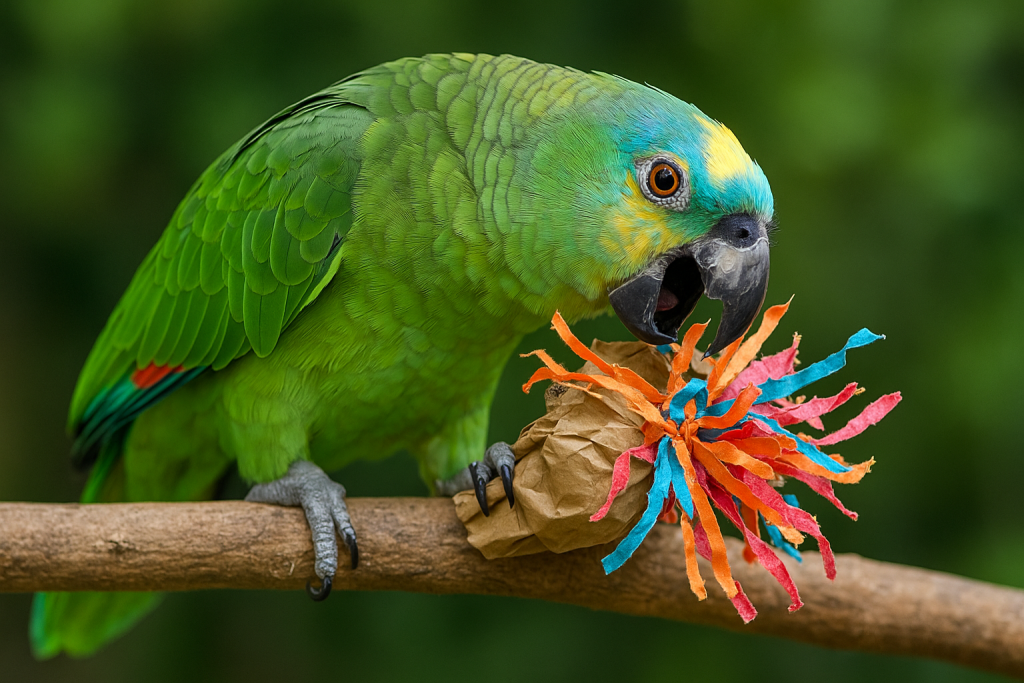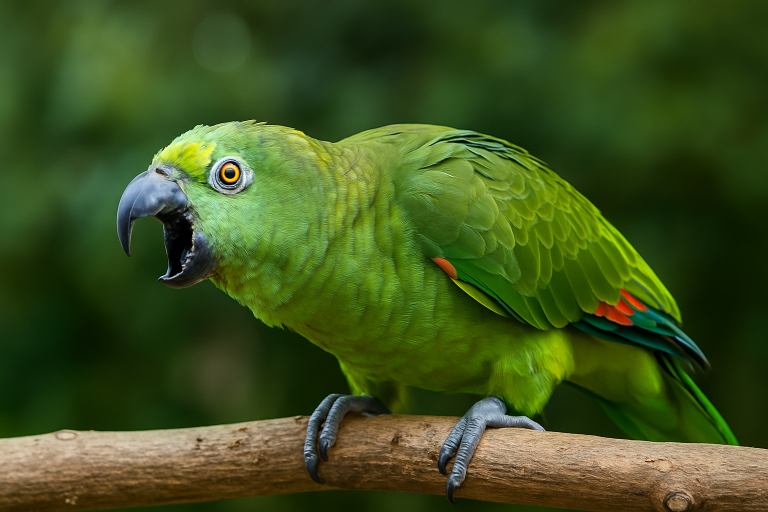Parrots are among the most vocal creatures on the planet, capable of producing an astonishing range of sounds—from melodic whistles to ear-piercing shrieks. While their vocal abilities are part of their charm, excessive screaming can test even the most patient bird owner. If your feathered friend has turned into a tiny, feathered foghorn, don’t despair. This guide dives deep into why parrots scream and—most importantly—what you can do to restore peace (or at least, manageable noise levels) in your home.
Understanding Parrot Screaming: It’s Not Just Noise
Before trying to “fix” screaming, it’s crucial to understand that vocalization is a natural and essential part of a parrot’s behavior. In the wild, parrots use calls to:
- Communicate with flock members (location, warnings, bonding)
- Establish territory (“This tree is MINE!”)
- Express emotions (excitement, fear, frustration)
Domestic parrots retain these instincts. The problem isn’t that they scream—it’s that they scream too much or at inappropriate times. Let’s break down the common reasons behind excessive screaming.
1. Attention-Seeking: The Feathered Toddler Syndrome

Many parrots quickly learn that screaming = instant human interaction. If you rush over to shush them, give treats, or even yell back, you’ve just reinforced the behavior.
What to do:
- Ignore the scream, reward the quiet. Wait for a pause (even 2 seconds counts) before responding.
- Teach an alternative behavior, like ringing a bell or saying a word (“Hello!”) for attention.
- Avoid reacting emotionally. No scowling, laughing, or frantic shushing—parrots thrive on drama.
2. Boredom: The Scream of the Stir-Crazy
A bored parrot is a loud parrot. In the wild, they’d spend hours foraging, flying, and socializing. Captivity? Less stimulating.
What to do:
- Foraging toys > food bowls. Hide treats in cardboard, paper, or puzzle toys.
- Rotate toys weekly to prevent monotony.
- TV/radio for parrots? Some birds enjoy nature documentaries or calm music (avoid heavy metal—unless your parrot’s into that).
3. Fear or Distress: The Panic Alarm
Sudden, sharp screams may signal fear (a lurking cat, a strange noise). Chronic stress (from poor housing, lack of sleep, or harassment) can also trigger screaming.
What to do:
- Check for threats (real or perceived—yes, that new lamp is suspicious).
- Ensure 10–12 hours of darkness/sleep. Sleep-deprived parrots are cranky, loud parrots.
- Avoid punishment. Yelling or spraying water increases stress, making screams worse.
4. Hormonal Season: The Love-Sick Yodeling
During breeding season, parrots may scream to attract mates or defend territory. This is biology, not misbehavior.
What to do:
- Limit hormonal triggers: Avoid petting on the back (mating behavior), reduce high-fat foods, and increase daylight hours slightly to simulate non-breeding seasons.
- Provide extra outlets: Chewable toys, more baths (many parrots get frisky when wet).
5. Flock Calling: “WHERE IS EVERYONE?!”
In the wild, parrots call to locate their flock. At home, they scream when left alone or when you’re out of sight.
What to do:
- Call back softly to reassure them—but don’t reward prolonged screaming.
- Use a “safe word.” Train your parrot to respond to a specific sound (e.g., a whistle) that means “I’m here.”
Training Techniques to Reduce Screaming
Step 1: Identify the Trigger
Keep a log: When does screaming happen? What happened right before? This helps tailor solutions.
Step 2: The “Quiet” Command (Yes, It’s Possible)
- Wait for a natural pause in screaming.
- Say “Quiet” calmly and immediately reward with a treat.
- Repeat. Over time, the parrot associates “Quiet” with stopping noise.
Pro tip: Use a clicker for precise timing.
Step 3: Environmental Enrichment = Less Screaming
A stimulated parrot is a quieter parrot. Try:
- Training sessions (5–10 minutes daily)
- Social time (parrots need interaction, not just cage time)
- Out-of-cage exploration (supervised, parrot-proofed areas)

What NOT to Do
🚫 Covering the cage as punishment → Creates fear, not quiet.
🚫 Yelling back → You’re just joining their scream-fest.
🚫 Ignoring all vocalizations → Some screams are important (injury, fear). Learn the difference.
When to Seek Help
If screaming is sudden, extreme, or paired with signs of illness (fluffed feathers, lethargy), consult an avian vet. Pain or illness can cause vocal changes.
Final Thought: Embrace the Noise (Within Reason)
Parrots aren’t silent pets—and that’s part of their magic. The goal isn’t to mute them but to shape their vocalizations into something more harmonious. With patience, consistency, and plenty of enrichment, you can turn ear-splitting shrieks into chatter, whistles, or even words.
And if all else fails? Invest in some earplugs. You’re living with a miniature dinosaur, after all.


